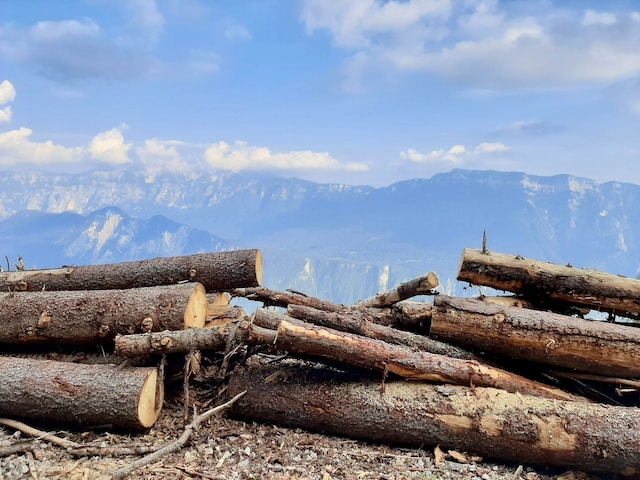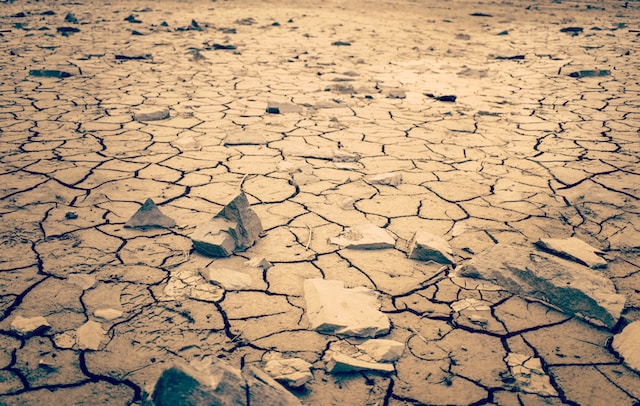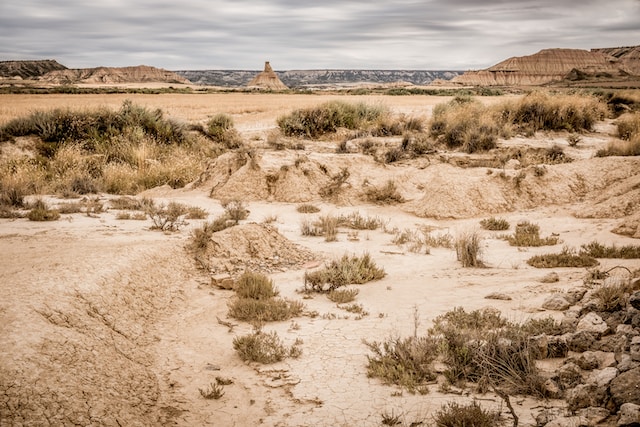The Earth’s landscapes are continuously shaped by a complex interplay of natural processes and human activities. One striking consequence of human influence on the environment is the expansion of deserts. In this article, we are going to find out how the human lifestyle is responsible for extension of deserts.
Once limited to specific regions, deserts are now spreading, and human lifestyle plays a significant role in this unsettling phenomenon. Let’s explore the theory behind the extension of desserts.
What is Desertification
Desertification is a process in which fertile land becomes increasingly arid and unproductive, often transforming into desert-like conditions. It involves the degradation of soil quality and the loss of vegetation cover, making the affected land less capable of supporting agriculture or sustaining ecosystems.
Desertification is typically driven by a combination of natural factors, such as climate variability, and human-induced activities, including deforestation, overgrazing, poor agricultural practices, and improper land management. The consequences of desertification include reduced agricultural productivity, loss of biodiversity, displacement of communities, and increased vulnerability to extreme weather events.
Addressing desertification requires sustainable land management practices, reforestation efforts, and measures to mitigate the impact of climate change and human activities on vulnerable ecosystems.
Factors leading to Desertification
Desertification, the process by which fertile land becomes increasingly arid and unproductive, is influenced by a combination of natural and human-induced factors. Here are key factors contributing to desertification:
Urbanization and Land Use Changes:
 The relentless expansion of cities and urban areas has profound effects on surrounding ecosystems. As concrete jungles replace natural landscapes, the delicate balance of local climates is disrupted. Urban heat islands emerge, intensifying temperatures and altering wind patterns, contributing to the encroachment of desertification.
The relentless expansion of cities and urban areas has profound effects on surrounding ecosystems. As concrete jungles replace natural landscapes, the delicate balance of local climates is disrupted. Urban heat islands emerge, intensifying temperatures and altering wind patterns, contributing to the encroachment of desertification.
Agriculture Practices and Deforestation:
 Modern agricultural practices, while essential for feeding a growing population, often contribute to soil degradation. Deforestation to make way for agriculture strips landscapes of vital vegetation that holds soil together, making them vulnerable to erosion. Unsustainable agriculture further deplete soil nutrients, accelerating the transformation of arable land into arid expanses.
Modern agricultural practices, while essential for feeding a growing population, often contribute to soil degradation. Deforestation to make way for agriculture strips landscapes of vital vegetation that holds soil together, making them vulnerable to erosion. Unsustainable agriculture further deplete soil nutrients, accelerating the transformation of arable land into arid expanses.
Water Mismanagement:
 Water scarcity is a critical factor in desertification. Over-extraction of groundwater for agriculture and other purposes depletes aquifers, reducing the natural resilience of ecosystems. Irrigation practices, if not sustainable, lead to the salinization of soils, rendering them unsuitable for cultivation and fostering desertification.
Water scarcity is a critical factor in desertification. Over-extraction of groundwater for agriculture and other purposes depletes aquifers, reducing the natural resilience of ecosystems. Irrigation practices, if not sustainable, lead to the salinization of soils, rendering them unsuitable for cultivation and fostering desertification.
Climate Change and Feedback Loops:
 Human-induced climate change amplifies the challenges posed by desertification. Rising temperatures, altered precipitation patterns, and extreme weathers intensify arid conditions. Feedback loops, such as decreased vegetation cover and increased heat absorption, create self-reinforcing cycles that hasten desert expansion.
Human-induced climate change amplifies the challenges posed by desertification. Rising temperatures, altered precipitation patterns, and extreme weathers intensify arid conditions. Feedback loops, such as decreased vegetation cover and increased heat absorption, create self-reinforcing cycles that hasten desert expansion.
Overgrazing and Unsustainable Land Management:
 Overgrazing by livestock, often driven by unsustainable agricultural practices, contributes significantly to desertification. Excessive grazing reduces vegetation cover, leaving soil exposed to erosion and inhibiting natural regeneration. Proper land management practices are crucial for preventing the degradation of ecosystems.
Overgrazing by livestock, often driven by unsustainable agricultural practices, contributes significantly to desertification. Excessive grazing reduces vegetation cover, leaving soil exposed to erosion and inhibiting natural regeneration. Proper land management practices are crucial for preventing the degradation of ecosystems.
Mining and Extractive Industries:
 The quest for valuable resources often leads to extensive mining and extraction activities in fragile ecosystems. These practices not only directly disrupt the landscape but also generate pollution and habitat destruction. The scars left by mining operations contribute to the degradation of once-productive land, facilitating desertification.
The quest for valuable resources often leads to extensive mining and extraction activities in fragile ecosystems. These practices not only directly disrupt the landscape but also generate pollution and habitat destruction. The scars left by mining operations contribute to the degradation of once-productive land, facilitating desertification.
Consumerism and Resource Depletion:
The global demand for goods and resources fuels unsustainable extraction practices. The extraction of raw materials often occurs in ecologically sensitive areas, contributing to habitat loss and ecosystem disruption. The depletion of natural resources indirectly exacerbates desertification by destabilizing ecosystems and reducing their ability to withstand environmental stressors.
Population Growth:
 Rapid population growth places immense pressure on land resources. Urban sprawl, driven by increasing population density, leads to the expansion of infrastructure into previously untouched areas. This further fragments ecosystems disrupts natural habitats, and contributes to the advance of desertification.
Rapid population growth places immense pressure on land resources. Urban sprawl, driven by increasing population density, leads to the expansion of infrastructure into previously untouched areas. This further fragments ecosystems disrupts natural habitats, and contributes to the advance of desertification.
This was all about the causes of desertification let’s have a look on some of the solutions that you can adopt to avoid it.
Mitigation and Solutions:
Here is the list of solutions given below that everyone can follow to preserve the beauty of nature.
Sustainable Agriculture Practices:
 Adopting sustainable agricultural methods, such as agroforestry and organic farming, can mitigate the impact of human activities on desertification. These practices promote soil conservation, water efficiency, and biodiversity, fostering resilient ecosystems.
Adopting sustainable agricultural methods, such as agroforestry and organic farming, can mitigate the impact of human activities on desertification. These practices promote soil conservation, water efficiency, and biodiversity, fostering resilient ecosystems.
Reforestation and Afforestation:
 Efforts to restore and expand forested areas can counteract desertification. Reforestation and afforestation projects enhance vegetation cover, stabilize soils, and contribute to carbon sequestration, mitigating the effects of climate change.
Efforts to restore and expand forested areas can counteract desertification. Reforestation and afforestation projects enhance vegetation cover, stabilize soils, and contribute to carbon sequestration, mitigating the effects of climate change.
Water Conservation and Management:
 Implementing water conservation measures, including efficient irrigation techniques and proper watershed management, is crucial for preventing desertification. Sustainable water use helps maintain the balance of ecosystems and supports long-term environmental health.
Implementing water conservation measures, including efficient irrigation techniques and proper watershed management, is crucial for preventing desertification. Sustainable water use helps maintain the balance of ecosystems and supports long-term environmental health.
Regenerative Land Management:
Adopting regenerative land management practices focuses on restoring degraded ecosystems. Techniques such as rotational grazing and holistic land management aim to improve soil fertility, enhance biodiversity, and promote the sustainable use of natural resources.
Renewable Energy Transition:
Reducing dependence on fossil fuels and transitioning to renewable energy sources can mitigate climate change, reducing the intensity of desertification. Sustainable energy practices contribute to a more environmentally conscious and resilient future.
Conclusion:
In the above editorial, we learned how the human lifestyle is responsible for extension of deserts. The expansion of deserts is a tangible consequence of human actions, reflecting the interconnectedness of our lifestyle choices with the health of the planet.
Recognizing and addressing the root causes of desertification through sustainable practices, conservation efforts, and global cooperation are essential steps toward fostering a balanced coexistence with nature. As stewards of the Earth, it is our responsibility to rethink and reshape our lifestyles to ensure a sustainable and vibrant future for generations to come.







